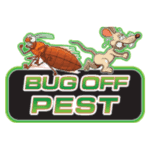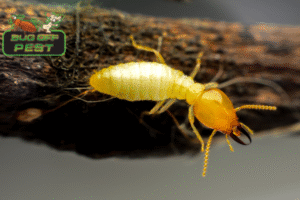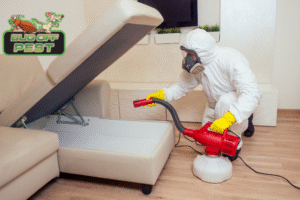Managing a cockroach problem can seem daunting, but understanding the behavior of these nocturnal insects simplifies the process. With various species, such as German and American cockroaches, coming indoors, identifying your specific type is crucial for effective pest management. Implementing a comprehensive strategy focusing on sanitation, moisture reduction, and sealing entry points can significantly reduce infestations. This guide will provide you with the best ways to approach cockroach control, ensuring a thorough and informed response to household invasions while minimizing health risks like food poisoning.
Comprehensive List of Effective Cockroach Control Strategies
Addressing a cockroach problem requires a systematic approach that targets various aspects of infestation. Start by accurately identifying the species of cockroaches in your home, as different types may require specific control methods. Maintain strict sanitation by properly storing food and eliminating water sources near kitchen sinks and storage areas. Utilizing gel baits and boric acid can effectively target troublesome nymphs and adult females. Additionally, deploying sticky traps and sealing entry points will enhance your pest management efforts, significantly reducing cockroach habitats.
1. Identifying the Cockroach Species in Your Home
Determining the specific species of cockroaches in your home is crucial for effective pest management, including the identification of tropical species. Common types include German cockroaches, recognizable by their light brown color and dark stripes. The larger American cockroach, often found in kitchens, can be identified by its reddish-brown hue. Take note of their egg cases, which can indicate infestation levels. Identifying these factors allows you to tailor control strategies efficiently and select the best way to combat these nocturnal pests.
2. Inspecting for Signs of a Cockroach Infestation
Noticing indicators of a cockroach infestation is crucial for effective pest control. Look for dark-colored droppings resembling pepper or coffee grounds, especially in areas where food is prepared or stored. The presence of shed skins, egg cases, and an unusual musty odor can also signal a problem. Additionally, tracking down cockroach activity in less-visible places, such as behind appliances and inside cabinets, can provide insights. Identifying these signs early plays a pivotal role in managing and eliminating the cockroach problem effectively.
3. Reducing Moisture and Eliminating Water Sources
Damp environments attract various species of cockroaches, making moisture reduction crucial in pest management. To effectively manage your cockroach problem, inspect areas like the kitchen sink, bathroom, and storage spaces for leaks or standing water. Fix any plumbing issues promptly and ensure proper ventilation to mitigate humidity. Additionally, sealing gaps in walls and floors will help prevent access to these nocturnal insects. By maintaining a dry environment, egg cases and cockroach nymphs are less likely to thrive, significantly reducing the potential for a full-blown infestation.
4. Sealing Entry Points and Cracks
Sealing entry points and cracks is paramount in effective pest management strategies against cockroaches. These nocturnal insects can infiltrate your home in many different ways through the tiniest openings, including gaps around windows, doors, and utility lines. By using caulk or weather stripping, you can effectively block these access areas of the building, drastically reducing the likelihood of a cockroach problem. Regular inspections of your surroundings, especially in basements and storage areas, further ensure any gaps are addressed promptly, creating an inhospitable environment for cockroach species such as the German cockroach and American cockroach.
5. Maintaining Proper Food Storage and Sanitation
Effective cockroach control hinges significantly on proper food storage and sanitation practices. Ensuring that food preparation areas remain clean and free from crumbs is essential, as even small amounts can attract these nocturnal insects. Store food in airtight containers and promptly clean up spills to eliminate potential food sources for cockroaches. Regularly dispose of garbage and keep storage areas tidy to reduce hiding places. By adopting stringent sanitation measures, the likelihood of a cockroach infestation can be significantly diminished, safeguarding your home from these unwelcome pests.
6. Removing Clutter Where Cockroaches Hide
Clutter serves as an ideal habitat for different species of cockroaches, providing many dark and hidden spots where these nocturnal insects can thrive. Regular decluttering of storage areas, under sinks, and around appliances significantly reduces hiding places for these pests. Organizing items, such as electronic devices, stacks of papers, or discarded grocery bags, not only improves your home’s aesthetics but also eliminates potential safe zones for adult females and their egg cases. This proactive approach is crucial for effective pest management and helps maintain a cockroach-free environment.
7. Using Sticky Traps for Monitoring Activity
Implementing sticky traps offers an effective method for monitoring cockroach activity within your home. Placing these traps in strategic locations, such as near suspected entry points or hiding places, helps identify infestations by capturing various cockroach species, including the German and American cockroaches. Regularly checking and analyzing the traps provides insights into the intensity of the infestation, allowing for timely pest management decisions. Ultimately, these visual indicators assist in understanding the behavior and movement of stealthy nocturnal insects, paving the way for more targeted control strategies.
8. Applying Gel Baits for Targeted Control
Gel baits serve as an effective targeted control method, especially against specific cockroach species like the German cockroach and the American cockroach. These baits contain active ingredients that attract pests while delivering a powerful insecticide, ensuring that even hidden cockroaches, such as nymphs and adult females, are eliminated. Placing gel bait in strategic locations like kitchen sinks, storage areas, and potential hiding places increases the likelihood of contact. Regularly monitoring bait stations allows for timely adjustments, enhancing the integrated pest management strategy for ongoing cockroach challenges.
9. Utilizing Boric Acid and Diatomaceous Earth Safely
Utilizing boric acid and diatomaceous earth effectively requires attention to safety procedures. Both substances are excellent components of an integrated pest management strategy, working as desiccants that target cockroach physiology. Sprinkling a small amount of diatomaceous earth in areas where cockroaches are likely to travel can disrupt their protective coating, leading to dehydration. Similarly, boric acid, often found in gel bait formulations, interrupts their digestive process. Always ensure these substances are placed in out-of-reach areas to minimize risk to pets and children while maximizing their efficacy against common cockroach species.
10. Choosing Top-Rated Commercial Roach Killers
An array of top-rated commercial roach killers, including aerosol sprays, is available to tackle various cockroach species effectively. Look for products from the University of California that contain active ingredients like boric acid or gel bait, which specifically target the cockroach problem while minimizing risks to humans and pets. Evaluating user reviews can guide you toward the best options for your unique situation, whether addressing German cockroaches or American cockroaches. Choose formulations designed for indoor use, focusing on areas where cockroaches are commonly active, such as kitchens and storage areas, ensuring comprehensive pest management.
11. Applying Insect Growth Regulators (IGRs)
Insect growth regulators (IGRs) are pivotal in managing cockroach populations by disrupting their development. These specialized chemicals mimic hormones, preventing immature nymphs from maturing into reproductive adults, thereby breaking the lifecycle of common species like German and American cockroaches. Utilizing IGRs as part of an integrated pest management approach enhances overall effectiveness, ensuring both residual control and reduced population growth. Applying them in areas where cockroaches are likely to breed can significantly lower the likelihood of reinfestation while minimizing risks associated with traditional insecticides.
12. Employing Natural and Least-Toxic Methods
Utilizing natural and least-toxic methods for pest control can effectively address a cockroach problem while prioritizing safety. Ingredients like boric acid and diatomaceous earth are particularly beneficial; they disrupt the cockroach’s exoskeleton or digestive system without posing significant risks to humans and pets. Additionally, essential oils—such as peppermint and tea tree—may repel these nocturnal insects. Implementing these approaches can create environmentally friendly pest management solutions that target space-specific infestations, minimizing environmental impact and promoting long-term control without harsh chemicals.
13. Outdoor Strategies to Prevent Indoor Infestations
Creating barriers around your home is essential for effective pest management. Start by trimming shrubs and bushes that encroach on your foundation, as these can serve as hiding places for various species of cockroaches. Next, ensure that mulch and leaf litter do not accumulate near entry points, which attracts these nocturnal insects. Additionally, sealing off cracks and gaps in exterior walls will deter cockroaches from accessing your home. Regularly inspect outdoor storage areas, reducing potential food sources and water sources, to maintain a cockroach-free environment.
14. Steps for Cockroach Control in Multi-Unit Buildings
Addressing a cockroach problem in multi-unit buildings requires a coordinated approach. Initiate an integrated pest management plan involving all residents, ensuring communication about infestations is clear. Regular inspections of shared areas such as laundry rooms and hallways help to identify signs of cockroach activity early. Implementing preventative measures, like sealing entry points and eliminating moisture sources, is crucial. For effective baiting, place cockroach gel bait and bait stations in common areas. Finally, engage professional pest management services when infestations exceed manageable levels to secure long-term solutions.
15. Knowing When to Call a Professional Exterminator
Recognizing the signs of a significant cockroach problem is crucial in determining whether to seek professional pest control services. Persistent infestations, despite efforts using gel bait or diatomaceous earth, indicate a potentially deeper issue that requires expert intervention. Furthermore, dealing with specific species, like the German or American cockroach, may necessitate specialized treatment techniques. If health concerns arise due to food preparation contamination or the risk of food poisoning, timely consultation with a professional exterminator becomes essential for effective resolution.
Frequently Asked Questions
To eliminate cockroaches safely around children and pets, opt for natural deterrents like essential oils or diatomaceous earth. Additionally, consider using commercial baits designed to be pet-safe, ensuring thorough monitoring and applying methods that minimize exposure to sensitive areas in your home.
If cockroaches are biting you or your family, it’s crucial to address the infestation immediately. Implement thorough cleaning and sanitation practices, seal entry points, and consider using gel baits or professional extermination for effective control. Prioritize safety and monitor for further activity.
Professionals tackle severe cockroach infestations through comprehensive inspections, targeted treatments like insecticides and traps, and ongoing monitoring. They often implement integrated pest management strategies to ensure lasting results while addressing underlying issues such as sanitation and structural vulnerabilities.




